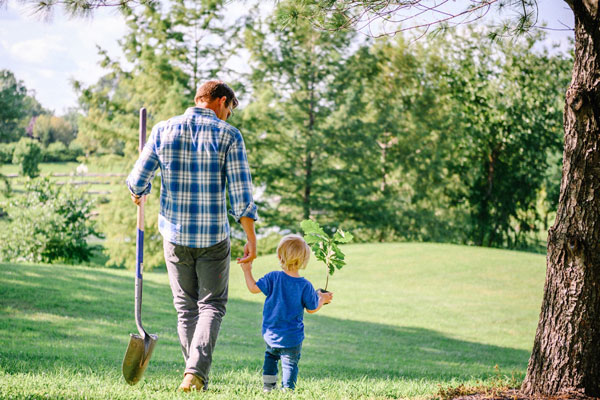
It’s always hard to let go of the fun days of summer. But then thoughts turn to what waits for us on the other side. Fall’s harvests, colored leaves, golden sunsets, and warm sweaters. Fall invites us to slow down, get cozy, and take a deep breath of crisp air. Each season has its novelties and delicacies, but fall months are a carnival for the senses. Especially outdoors!
There are routine projects to do in our yards. Lawns need aeration, fertilizing and top seeding. Vegetable gardens to clean up and fall crops planted.
But then there are those projects of the imagination. How to solve landscape issues, add seasonal color or invite pollinators. All while adding beauty, but not the maintenance beast.
Your solution may be native plants. Bright colors and textures of Midwest’s natives add stunning beauty all year. From perennials and grasses to trees and shrubs, natives offer seasonal interest. Used creatively they can reduce maintenance issues and add a unique look. For example, Pennsylvania sedge makes a beautiful ground cover in dry shade. Naturalizing sumacs can hold a steep slope and cut mowing. Bald cypress, swamp white oak or black gum absorb stormwater inlow, wet areas. And the nectar of native flowers is always welcome to migrating pollinators.
And the good news is that fall is the best time for planting. Why?
a. Fall soil temperatures are perfect! They encourage roots to continue to grow as the tree is going dormant and into the winter.
b. Roots are growing in the spring ahead of competition. Roots may continue to develop when soil temperature is as low as 40 degrees. And this growth occurs during a time when roots don’t have to support growing stems, leaves, and new flowers. In early spring, root growth accelerates, and top growth begins. In fact, fall planting of container stock can gain up to a year in plant establishment and growth.
c. Fall plantings need less supplemental watering. By summer, your fall plantings are well-established to handle heat and drought better. Fall and winter offer regular precipitation through rain and snow. And there are fewer pest and disease problems.
Forrest Keeling produces hundreds of native species. All grown using our patented RPM technology for faster growth and unmatched survivability. Come see us at our Nursery in Elsberry, Missouri. It’s where the best native plants begin! Or check out our website, ForrestKeelin


